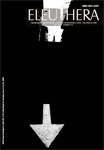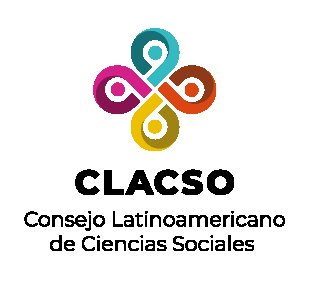Autores/as
Resumen
Resumen:El objetivo principal de este trabajo, es analizar la repercusión que tiene una disminución del uso de la autoridad formal en las prácticas de alto rendimiento en recursos humanos. De esta manera, se estudia la relación e influencia que la dirección tiene en la selección de sus prácticas. Para conseguirlo, se analizan los cambios que conlleva en una organización una disminución del uso de la autoridad formal, y se determinan cuáles son las repercusiones que estos cambios provocan en su gestión en general y en particular en las prácticas de alto rendimiento. Para introducirnos en un campo de estudio poco explorado como es éste y proponer la elaboración de esta investigación, hemos elegido el método del caso con el fin de profundizar en determinados conceptos y relaciones que la literatura en algunos casos pasa por alto, con el objetivo de poder determinar una serie de proposiciones que se puedan corroborar en investigaciones futuras en las que participen un número de empresas mayor.
Además, con esta metodología se dan a conocer prácticas concretas que la empresa analizada lleva a cabo y que pueden ser implantadas en otras organizaciones. Este estudio se realizó en el año 2009, a partir de la visita realizada a la Organización SEMCO1 por uno de los autores, intentando describir organizaciones desprovistas del concepto de autoridad formal, como requisito para optar a la titulación: Diploma de Estudios Avanzados en el marco del Doctorado en Administración de Empresas, de la Universidad San Pablo.
Palabras clave
Citas
Barney, J.B. (1991). “Firms resources and sustained competitive advantage”, Journal of Management, 17: 99-120.
Becker, B. & Gerhart, B. (1996). “The impact of human resource management on organizational performance: progress and prospects”. Academy of Management Journal, 39: 779-801.
Bennis, W.G. (1976). “Organization Development in Transition”. The Journal of Applied Behavioral Science, 12(1): 22-43.
Bishop, J.W.; Scott, K.D. & Burrougs, S.M. (2000). “Support, commitment and employee outcomes in a team environment”. Journal of Management, 26: 1113-1132.
Bonache, J. (1999). “El estudio de casos como estrategia de construcción teórica: características, críticas y defensas”. Cuadernos de Economía y Dirección de la Empresa, 3: 123-140.
Boyatzis, R.E. (1971). “Leadership: the effective use of power”. Management of Personnel Quarterly, fall: 21-25.
Céspedes, J.J.; Jerez, P. & Valle, R. (2005). “Las prácticas de recursos humanos de alto rendimiento y la capacidad de aprendizaje organizativo: incidencia e implicaciones”. Cuadernos de Economía y Dirección de la Empresa, 24: 29-56.
Cremer, J. (1993). “Corporate culture and shared knowledge”. Industrial and Corporate Change, 2(3): 351-386.
Delaney, J.T. & Huselid, M.A. (1996). “The impact of human resource management practices on perceptions or organizational performance”. Academy of Management Journal, 39(4): 949- 969.
Delery, J. & Doty, H. (1996). “Modes of theorizing in strategic in strategic human resource management: test or universalistic, contingency and configurational performance predictions”. Academy of Management Journal¸ 39(4): 802-835.
Delery, J.E. (1998). “Issues of fit in strategic human resource management: implications for research”. Human Resource Management Review, 8: 289-309.
Eisenberger, R.; Huntington, R.; Hutchison, S. & Sowa, D. (1986). “Perceived organizational support”. Journal of Applied Psychology, 71: 500-507.
Eisenhardt, K.M. (1989). “Building theories from case study research”. Academy or Management Review, 14: 532-550.
Ferris, G.R.; Hochwarter, W.A.; Buckley, M.R.; Harrell-Cook, G. & Frink, D.D. (1999). “Human resources management: some new directions”. Journal or Management, 25: 385-415.
Giménez, G. & Simon, B. (2002). “Una Nueva Perspectiva en la Medición del capital Humano” (pp. 1-28). Departamento de Estructura, Historia Económica y Economía Pública, Universidad de Zaragoza. Documento de Trabajo, 2 (Febrero).
Gouldner, A.W. (1960). “The norm of reciprocity: a preliminary statement”. American Sociological Review, 25: 161-178.
Guest, D. (1987). “Human resource management and industrial relations”. Journal of Management Studies, 24: 503-521.
Hagen, A. et al. (1998). “Critical Strategic leadership Components: An Empirical Investigation”. Journal article Advanced Management Journal, 63.
Heskett, H.J.; Jones, T.; Loveman, G.; Sasser, E. & Schlesinger, L. (1994). “Putting the Service Profit Chain to Work”. Harvard Business Review, Marzo-Abril: 164-174.
Huselid, M.A. (1995). “The impact of human resource management practices on turnover, productivity, and corporate financial performance”. Academy of Management Journal, 38: 635- 672.
Ibrahim, A.B. & Kelly, J. (1986). “Leadership style at the policy level”. Journal of General Management, 11(3): 36-45.
Ichniowski, C.; Shaw, K. & Prennushi, G. (1997). “The effects of human resource management practices on productivity: A study of steel finishing lines”. American Economic Review, 87(3): 291-313.
Iles, P.; Foster, A. & Tinline, G. (1996). “The changing relationships between work commitment, personal flexibility and employability: an evaluation of field experiment in executive development”. Journal of Managerial Psychology, 11(8): 18.
Jackson, S. & Schuler, R. (1995). “Understanding human resource management in the context of organizations and their environments”. Annual Review Psychology, 46: 237-264.
Kaplan, R.S., & Norton, D.P. (1992). “The balanced scorecard: measures that drive performance”. Harvard Business Review, January-February: 71-79.
Kofman, F. & Senge, P.M. (1993). “Communities of commitment: the heart of learning organizations”. Organizational Dynamics, 22(2): 4-23.
Kreps, D. (1990). “Corporate culture and economic theory”. En: J. Alt & K. Shepsle (Eds.), Perspectives on positive political economy (pp. 90-143). Cambridge.
Lawler, E.E. (1986). High-involvement management: participative strategies for improving organizational performance. San Francisco: Jossey Bass.
Lee, J. & Miller, D. (1999). “People matter: commitment to employees, strategy and performance in korean firms”. Strategic Management Journal, 20: 579-593.
Lengnick-Hall, C.A. & Lengnick-Hall, M.L. (1988). “Strategic human resource management: a review of the literature and a proposed typology”. Academy of management Review, 13: 454- 470.
MacDuffie, J.P. (1995). “Human resource bundles and manufacturing performance: organizational logic and flexible production in the world auto industry”. Industrial & Labor Relations Review, 48: 197-221.
Miles, M.B. & Huberman, A.M. (1984). Qualitative data analysis: a sourcebook of new methods. Beverly Hills: Sage.
Montoya, J.N. (2001). “La autoridad formal una restricción en las organizaciones. Una propuesta toc”. The International Journal Business and Finance Research. IBFR. Global. Issn. 1931- 0277, issn. 1931-0269, issn. 1931-1285.
O´Reilly, C. (1989). “Corporations, cultures and commitment: Motivation and social control in organizations”. California Management Review, 31(4): 286-303.
Ordiz, M. (2002). “Prácticas de alto rendimiento en recursos humanos: concepto y factores que motivan su adopción”. Cuadernos de Economía y Dirección de la Empresa, 12: 247-265.
Pfeffer, J. (1994). Competitive advantage through people. Boston, Ma: Harvard Business School Press.
Porter, M.E. (1980). Competitive Strategy: techniques for analyzing industries and competitors. Nueva York: Free Press.
________. (1985). Competitive advantage: creating and sustaining superior performance. Nueva York: Free Press.
Roca, V.; Escrig, A.B. & Bou, J.C. (2002). “Compromiso con los empleados y estrategia competitiva: un análisis intersectorial de su repercusión en los resultados”. Cuadernos de Economía y Dirección de Empresas, 12: 267-289.
Roche, W.K. (1999). “In search of commitment oriented human resource management practices and the conditions that sustain them”. Journal or Management Studies, 36: 653-678.
Ruiz de Olabuenaga, J.I.; Aristegui, I. & Melgosa, L. (1998). Cómo elaborar un proyecto de investigación social. Cuadernos monográficos del ICE, 7.
Salas, V. (2000). “La cultura de las organizaciones”. Cuadernos de Economía y Dirección de la Empresa, 7: 341-364.
Sánchez, I. (2002). “Un análisis de las medidas de estructura organizativa: estructura diseñada frente a estructura emergente”. Cuadernos de Estudios Empresariales, 12: 271-291.
Sashkin, M. (1984). “Participative management is an ethical imperative”. Organizational Dynamics, 12(4): 5-22.
Schuler, R.S. y Jackson, S.E. (1987). “Linking competitive strategy with human resource practice”. Academy or Management Executive, 1: 207-219.
Senge, P. (1993). The Fitth Discipline. Doubleday Pub., New York (versión española, La Quinta Disciplina, Granica, Barcelona).
Shewart, W. (1939). Statistical method from the viewpoint of quality control. (W. Edwards Deming), Washington: The Graduate School, the Department of Agriculture. 155p.
Schlesinger, L. & Heskett, J. (1991). “Breaking the cycle of failure in service”. Sloan Management Review, spring: 17-28.
Truss, C.; Gratton, L.; Hope-Haliley, V.; McGovern, P. & Stiles, P. (1997). “Soft and hard models of human management: a reappraisal”. Journal of Management Studies, 34: 53-73.
Valle, R.; Martín, F.; Romero, P.M. & Doland, S.L. (2000). “Business strategy work processes and human resource training: are they congruence?”. Journal of Organizational Behaviour, 21: 283-297.
Walton, E.J. (1981). “The comparison of measures or organization structure”. Academy of Management Journal, 6: 155-160.
Walton, R.E. (1985). “From control to commitment in the workplace”. Harvard Business Review, 63: 77-84.
Wayne, S.J.; Shore, L.M. & Liden, R.C. (1997). “Perceived organizational support and leader member exchange: a social exchange perspective”. Academy of Management Journal, 40: 82-111.
Wernerfelt, B. (1984). “A resource-based view of the firm”. Strategic Management Journal, 5: 171-180.
Wood, S. & Albanese, M.T. (1995). “Can we speak of a high commitment management on the shop floor?”. Journal of Management Studies, 32: 215- 247.
Wright, P. & MacMahan, G. (1992). “Theoretical perspectives for strategic human resource management”. Journal of Management, 18: 295-320.
Yin, R.K. (1981). “The case study crisis: some answers”. Administrative Science Quarterly, 28: 58-65.
________. (1994). Case study research: Design and methods. Sage Publications.
________. (2003). Designing Case Studies en Case Study Research. Thousands Oaks, Sage Publications.
Youndt, M.A.; Snell, S.A.; Dean, J.W. & Lepak, D.P. (1996). “Human resource management, manufacturing strategy, and firm performance”. Academy of Management Journal, 39: 836-866.

 PDF
PDF
 FLIP
FLIP
























